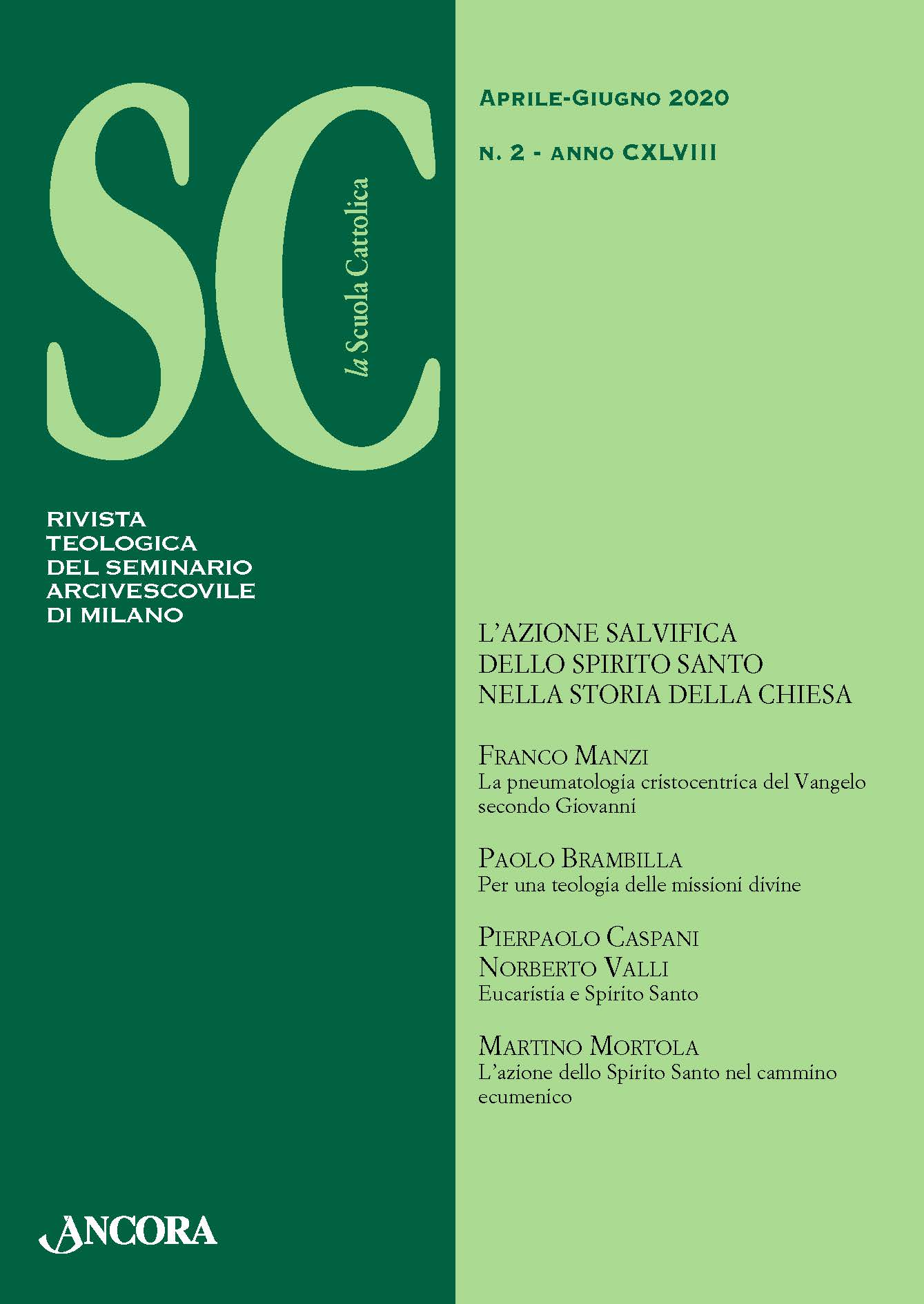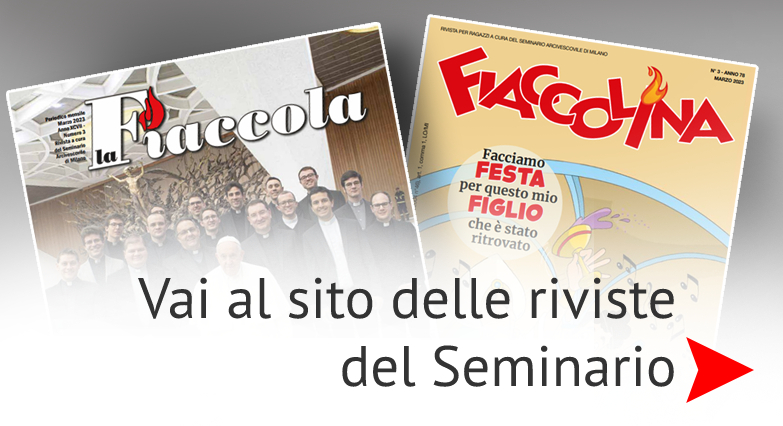
Sommari:
FRANCO MANZI, La Memoria Iesu dello Spirito nella Chiesa per la salvezza del mondo. La pneumatologia cristocentrica del Vangelo secondo Giovanni, 191-230
Questa indagine sulla pneumatologia del Quarto Vangelo mostra come la Chiesa sia fondata sulla missione del Figlio, «uscito dal Padre e venuto nel mondo» per salvarlo, e sulla missione dello Spirito, «che procede dal Padre» ed è soffiato dal Signore glorificato sui discepoli, per coinvolgerli nella sua missione salvifica universale. Per aiutare la Chiesa a proseguirne la missione, lo Spirito le fa memoria di Gesù, del quale attualizza e universalizza l’offerta della riconciliazione e della vita eterna. Per salvare il mondo, lo Spirito agisce nella Chiesa come Gesù, cioè attraverso segni ‒ parole e opere ‒ di attrazione salvifica, il cui senso è comprensibile a chi crede.
This enquiry into the pneumatology of John’s Gospel shows how the Church is founded on the mission of the Son, who «came from the Father and came into the world» to save it, and on the mission of the Spirit, «who proceeds from the Father» and is breathed by the glorified Lord upon the disciples, to involve them in his universal salvific mission. To help the Church to carry forward this mission, the Spirit brings Jesus to the Church’s remembrance, actualizing and universalizing Jesus’ offer of reconciliation and eternal life. To save the world, the Spirit acts in the Church as did Jesus, that is, through signs – words and works – which draw towards salvation, and whose meaning is understandable to those who believe.
PAOLO BRAMBILLA, Dio può agire nella storia solo con le sue «mani», ossia il Figlio e lo Spirito. Per una teologia delle missioni divine, 231-261
L’obiettivo dell’articolo è anzitutto la presentazione del concetto teologico di «missione», come proposto da Agostino e sviluppato da Tommaso. Esso si rivela strumento per comprendere il modo di agire di Dio nella storia, riuscendo, da una parte, a mostrare la continuità tra la Trinità immanente e quella economica; dall’altra, a supportare una sana teologia dello Spirito Santo. Alla luce di alcune osservazioni, si propone di estendere il concetto di missione sovrapponendolo a quello scolastico di «processione temporale», chiamando missione ogni nuovo modo di presenza del Figlio e dello Spirito Santo nella storia, con alcuni vantaggi dal punto di vista della riflessione teologica.
The purpose of this article is first and foremost to present the theological concept of «mission», as put forward by Augustine and further developed by Aquinas. This concept reveals itself as the instrument by which one comprehends the form of God’s action in history, thus succeeding on the one hand, in demonstrating the continuity between the immanent and economic Trinity and on the other in supporting a healthy theology of the Holy Spirit. In the light of some observations, the proposal to extend the concept of mission by overlapping it with that of the scholastic concept of «temporal procession» is put forth, calling mission every new form of presence of the Son and of the Holy Spirit in history, with some advantages regarding the theological reflection.
PIERPAOLO CASPANI – NORBERTO VALLI, Eucaristia e Spirito Santo, 263-294
Prendendo le mosse dal confronto con la proposta di J.M.R. Tillard sulla necessità di considerare l’azione dello Spirito in riferimento al mistero eucaristico nella sua globalità e dopo aver ricostruito in sintesi la questione dell’epiclesi, l’articolo mette a fuoco prospettive in grado di propiziare una rilettura «spirituale» della celebrazione eucaristica. Rileggendola come atto del Signore en Pneumati, si discute criticamente l’identificazione che il teologo canadese pone tra corpo eucaristico e corpo risorto / «pneumatico» del Signore. Grazie a qualche sondaggio nella tradizione liturgica, è poi approfondito il tema dello Spirito come frutto della celebrazione eucaristica. Si evidenziano così il legame tra dono dello Spirito e unità della Chiesa, nonché il carattere paradigmatico dell’azione dello Spirito nella celebrazione.
Starting off with the comparison with J.M.R Tillard’s proposal on the necessity of considering the action of the Spirit with reference to the eucharistic mystery as a whole and having concisely reconstructed the question of the epiclesis, this article focuses on perspectives able to propitiate a «spiritual» reinterpretation of the eucharistic celebration. Re-reading the celebration as the Lord’s action en Pneumati, the identification that the Canadian theologian poses between the eucharistic and the risen/«pneumatic» body of the Lord is discussed. Thanks to some investigations into the liturgical tradition, the theme of the Spirit as the fruit of the eucharistic celebration is elaborated. Thus the bond between the gift of the Spirit and the unity of the Church as well as the paradigmatic character of the action of the Spirit within the celebration is highlighted.
MARTINO MORTOLA, Discernere l’azione dello Spirito Santo nel cammino ecumenico, 295-322
L’impegno ecumenico della Chiesa cattolica è sostenuto dalla consapevolezza che lo Spirito Santo agisce nelle altre confessioni cristiane in modo analogo a come agisce nella Chiesa cattolica, in vista della piena composizione dell’unico corpo visibile di Cristo. Il punto di vista iniziale è quello biblico: aiutato dai modelli ecclesiologici di Dianich e di Repole, si può affermare l’azione sinergica del Figlio e dello Spirito nell’accadere e nel rigenerarsi dell’evento Chiesa. Tali modelli permettono di argomentare meglio alcuni dati del recente magistero ecumenico, che riconosce il rinnovato impulso all’unità come autentica manifestazione dello Spirito Santo, e auspica che la via verso la piena comunione sia preparata da un più abbondante scambio di doni tra le diverse confessioni. La proposta conclusiva è di guardare alla presenza dello Spirito nelle confessioni cristiane in modo analogo a come si discerne la presenza dei carismi all’interno della Chiesa cattolica.
The Catholic Church’s ecumenical commitment is sustained by the awareness that the Holy Spirit acts in the other Christian denominations in an analogous way to how He acts within the Catholic Church, with a view to the full reunification of the one visible body of Christ. The initial viewpoint is biblical: assisted by the ecclesiological models of Dianich and Repole,
we can affirm the synergic action of the Son and of the Spirit in the coming into being and the regeneration of the Church event. Such models allow us to better understand some points from the recent ecumenical teaching which recognises the renewed impulse towards unity as an authentic manifestation of the Holy Spirit, and desires that the road towards full communion be prepared by a more abundant exchange of gifts between the different denominations. In conclusion, the proposal is to look at the presence of the Spirit within the Christian denominations in the same way as the presence of charisms within the Catholic Church is discerned.

